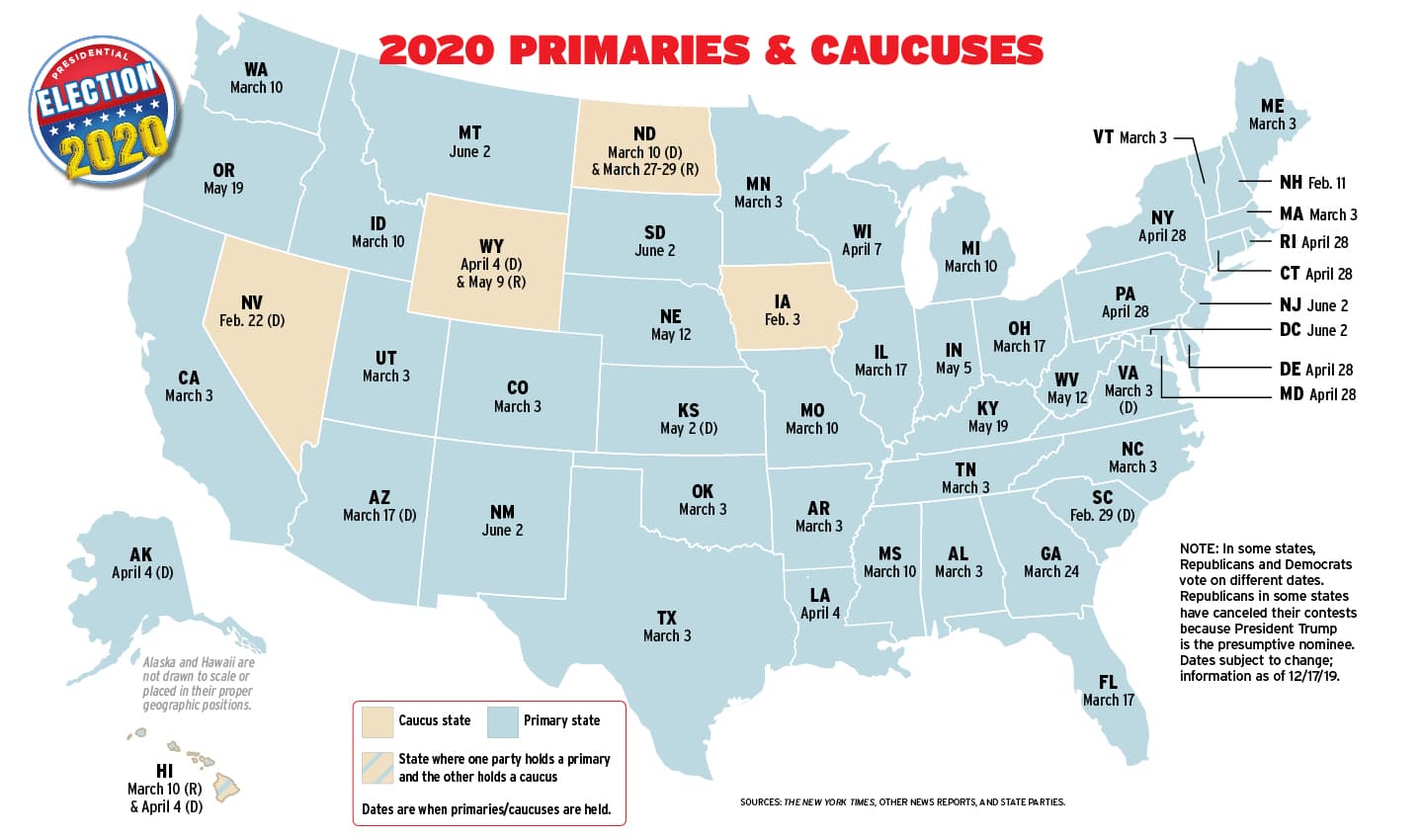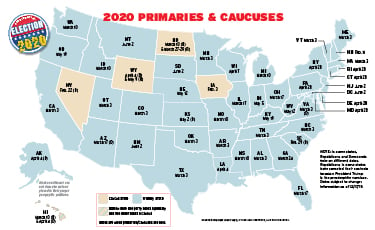Library of Congress
Donald Trump
President; seeking a second term
In the 19th and early 20th centuries, elected officials and party leaders chose presidential candidates at the conventions. Reformers began promoting primaries—elections to pick party nominees—in the late 1800s, saying party bosses were cutting backroom deals to select nominees. The first primaries occurred in the early 1900s, but it wasn’t until after World War II that they began to play a significant role in choosing candidates.
In the 19th and early 20th centuries, elected officials and party leaders chose presidential candidates at the conventions. Reformers claimed that party bosses were cutting backroom deals to select nominees. In response, the reformers began promoting primaries in the late 1800s. These elections were designed to pick party nominees. The first primaries occurred in the early 1900s, but they didn’t begin to play a significant role in choosing candidates until after World War II.


